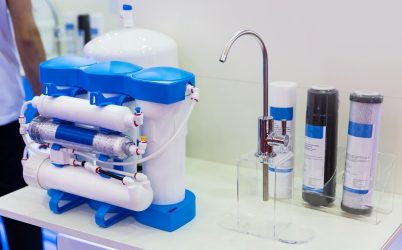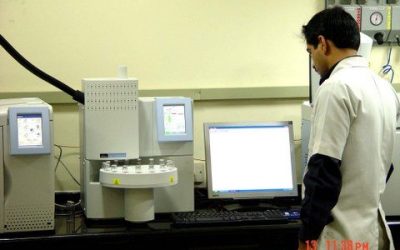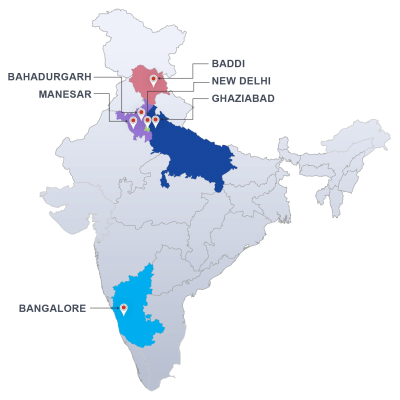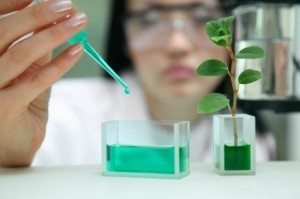
As we all know, over 70% of the Earth consists of water. But you may not be aware of the fact that particles are present everywhere in natural water, in water flowing through water distribution or purification systems, as well as in wastewater treatment plants. That is why a proper study of particle size distribution and analysis is required in water testing.
But before we move on to the importance of particle size analysis, let’s first see what particle size distribution is and how it gets measured. So you will be able to understand why it is inevitable in water testing.
Particle Size Distribution: Meaning and Explanation
Particle Size Distribution is generally a list of values that distinguish the relative particle amount (by mass) according to their individual sizes. In simple words, we can also say that the PSD index indicates a particle’s proportion in a given mixture as compared to the total amount of particles.
The ratio is based on the size of particles. Plus, particle size distribution tests can be done for a given granular material, particles present in fluid (water), or powder.
However, determining the particle size here is not easy because particles usually do not have a regular shape. In order to make the measurements efficient and convenient, “sphere-equivalent diameter” is used.
Under particle size testing, every individual particle gets measured with a specific measurement principle. After that, it gets defined in terms of sphere diameter, such that similar results are obtained by the two.
Particle Size Distribution: Method of Measurement
Different particle testing labs opt for distinct methods for particle size distribution analysis. Moreover, the type of material used for the testing also determines the methods that can be used. When we talk about water particle sizes, the following approaches are considered to be standard:
- Optical Microscopy: This is a direct counting and sizing by a microscope. But these are only feasible for particles that are larger than 0.1 μm.
- Coulter Counter or Electrical Sensing Zone Instruments: Under this, the equipment consists of at least one microchannel that is further divided into two separate chambers. When the liquid gets passed through these, their analysis gets done based on the change they cause in the total electrical resistance.
- Light Obscuration or Light-Blockage Instruments: Here, a light source is used to detect the stream’s individual particles through their shadow on the detector.
- Light Scattering Instruments or Laser Diffraction-Based Particle Size Analyzer: The use of the laser-based instrument for particle size distribution analysis helps in detecting finer and smaller particles in the given liquid.
All of these techniques are recommended in the standard methods for the examination of water and wastewater which is prepared and published by the American Public Health Association, American Water Works Association and the Water Environment Federation, for water testing.
The method number 2560 of APHA, a standard method for the examination of water and wastewater provides a detailed method for particle counting and size distribution in water and wastewater.
The process usually gets chosen based on their efficiency for continuous-flow detection or batch samples. However, continuous-flow may be desirable because batch samples require high maintenance so that the particle count does not change or get affected in any way. A few other factors that determine the choice of particle size analysis are:
- Sample Presentation
- Detection Limits
- Solubility
- Particle Size Range
- Sample Concentration
- Particle Shape
Once all these factors get examined, a suitable process is selected to obtain the best results.
Particle Size Distribution: Its Importance in the Analysis of Water
As stated earlier, particles are distributed everywhere, from natural waters to wastewater treatment streams. Particle size distribution and particle count analysis help understand the composition of water in rivers and streams, water coming into treatment plants, water used in various processes, as well as water produced by treatment and purification processes.
Water testing is done to understand the particle size distribution and the number of particles present in any kind of water. It further helps in designing suitable treatment processes by proper selection of filters and filtration techniques.
Monitoring these properties also helps make decisions on the proper operation of water purification systems and their proper maintenance and upkeep for optimum process efficiency.
Therefore, particle size distribution analysis is necessary for various industries so that they can maintain their processes and other functions.
Our Water Testing and Particle Count Analysis Laboratory
Our water testing laboratory carries out the test for various industries and institutions. Besides particle analysis in water and wastewater, we also offer a complete array of water testing services, including chemical, biological evaluation, pesticide residue etc. following national and international standards.
Our laboratory is ISO 17025 accredited by the National Accreditation Board for Testing and Calibration Laboratories (NABL), India, for the analysis of various parameters and water.
Please feel free to contact us by using the contact form on the right or calling us now on +91-11-4575 4575.

















2 Responses
I have a customer that wants to know the particle size of his process water for making paint. He is interested in 10 microns for his filter needs. Can you quote me for one sample? Sample bottle type and volume too.
Hi, Which location are the samples originating from?